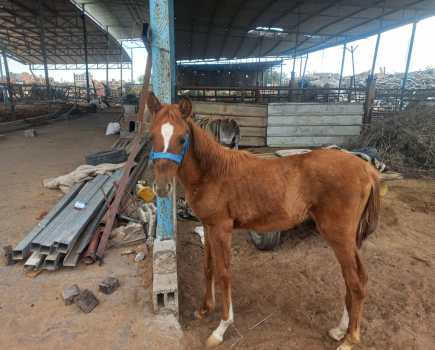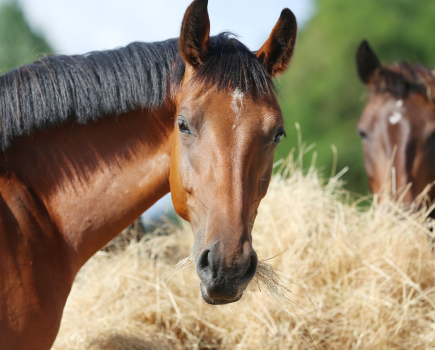With recent estimations suggesting that almost one third of hay or haylege fed to horses ends up being thrown away, a major feed brand is encouraging horse owners avoid waste by focusing on how much their horse actually eats rather than over-supplying forage relative to appetite. However, the premise of feeding as much as a horse will eat (unless they are overweight) is still central to their advice.
“As a company, we are mindful of the environmental pressures we are facing and want to do our part to reduce waste, while still promoting management advice that supports horse welfare,” said Sarah Nelson, Product Manager at Mars Horsecare, home of the SPILLERS™ brand.
Traditionally the company has used the term ‘ad lib’ when recommending the feeding of forage without restriction. Instead, the team of nutrition advisors will now use language such as ‘ideally horses should be provided with as much forage as they will eat, while being mindful of excess waste.’ An important caveat, they stressed, is that what is actually eaten, not what is given, should always be monitored when feeding conserved forage. It is also important to ensure that an absolute minimum of 1.5% of current bodyweight (on a dry matter basis) of forage is eaten (typically at least 8.5kg of hay for a 500kg horse without access to grazing), unless the horse is on a carefully monitored weight loss diet, they said.
At a recent scientific conference in Belgium (the European Equine Health and Nutrition Congress), there was comprehensive discussion about the amount of forage wasted when feeding horses, with some estimating that in Europe, around 30% of the hay or haylage fed to horses ends up on the muck heap.
“Grassland and conserved forage are precious resources for horses and livestock,” said Sarah.”The associated environmental costs such as fuel and fertiliser are another reason these valuable resources should not be wasted.”
How haynets and boxes can help
Early research presented at the Equine Science Society Symposium in Texas in June provided encouraging information on the use of haynets to prevent waste.
The preliminary study investigated the effect of feeding round bale hay with and without a net on hay usage and dental health. The researchers found that using a net significantly reduced hay wastage without increasing the risk of dental issues and estimated that it could save approximately 1.3 tonnes of wasted hay per year for a 500kg horse.
The haybox (which is a large floor-based container with a grill or mesh placed on top of the forage to slow eating time), and other slow feeding devices are also becoming increasingly recognised as an effective way to feed forage safely while minimising waste. These feeding devices aim to mimic a more natural way of feeding from the ground, while slowing intake.
“While hayboxes and nets may not be suitable for all horses, they are worth considering, both for preventing waste and weight management,” said Sarah. “In fact, as part of our on-going research in the areas of laminitis and obesity, we continue to be involved in several studies investigating the use of haynets and feeders to help us better understand how we can manage intake without compromising health and welfare.
“We are committed to constantly improving our knowledge and advice in horse nutrition and management. We hope that our change in terminology will help reduce forage waste and have a positive impact on the environment.”









